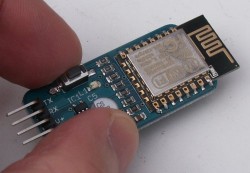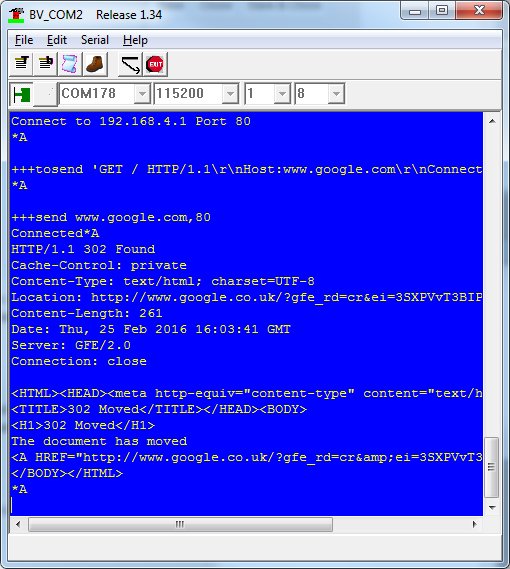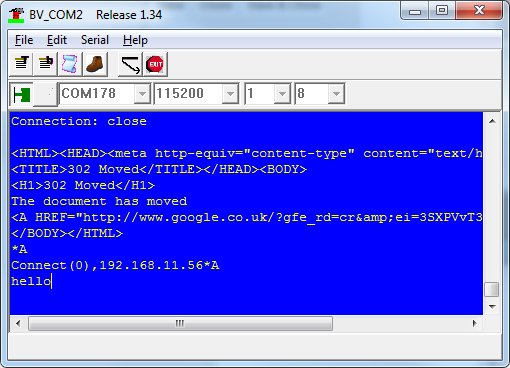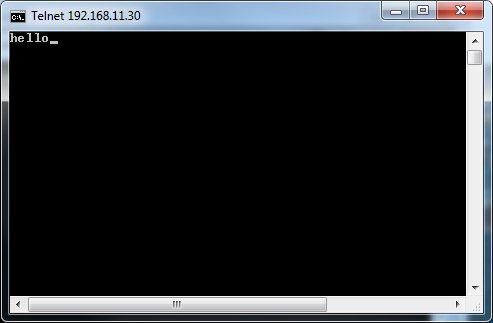BV107_1 WiFi to Serial

Set Up
The device can be set up from either end, wifi end or serial end, for the examples shown, the wifirouter address is 192.168.11.50, called the gateway and the desired address for the device is 192.168.11.30, port 80.
Method 1 WiFi End
1) Press the button and hold for 10 seconds, the led with then start to flash. It will also be flashing when first set up from the factory.
2) Connect the the Access point (this device will be an access point) with a Phone, lap top or PC
3) Browse to 192.168.4.1

4) Select Station setup:
5) Set mode to 1 and enter the details of your home wifi.
6) Save and then save changes and that's it
The settings will be remembered even after power down. The settings can be changed at any time by pressing and holding the button for longer than 6 seconds. Any serial device can now be operated through wifi using TELNET or some other such program, BvSerial is very good as you can open a socket, in the above example instead to using say COM3 you would use socket://192.168.11.30:80 and this would work exactly as if connected to say COM3.
Method 2 Serial End
Connect the device to the USB to serial using 4 wires, the DTR is optional.

Note the crossed over TX/RX - RX/TX
Open a terminal for the correct COM port and use 115200 Baud, <enter> is the CR or Enter key on the keybpard, it is important that this is pressed just before the +++
<enter>+++mode=1<enter>
<enter>+++ip=192.168.11.30,192.168.11.50,255.255.255.0<enter>
<enter>+++sta=myddis,mypassword<enter>
<enter>sysflag=240<enter>
<enter>+++reset<enter>
When the LED stops flashing a connection has been made

<enter>+++info<enter>
Will give something similar to the above screen, check that it is in mode 1 and the IP is okay. If the LED does not stop flashing it means that it cannot contact your home wifi hub (router). The most likely cause is that the SSID or password is wrong OR it is out of range.
Testing
Once a connection has been established it is possible to test. As this can be connected to any serial device we will assume that iyt is connected to a USB to Serial device as above and we can communicate via the +++ command as we did above with +++info.
Try this
<enter>+++tosend 'GET / HTTP/1.1\r\nHost: www.google.com\r\nConnection: close\r\n\r\n'
<enter>+++send www.google.com,80

This is the result, note the reply back from google.
Something a bit closer to home:
Open a command window and start a telnet session:

The screen normally says Connecting.. and then goes blank
Now type hello in the com session

And this will be reflected in the telnet session

Vise - Versa also works.